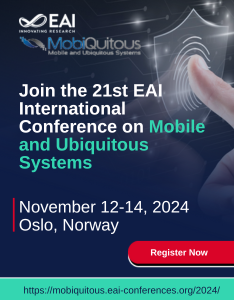
Research Article
A blended user centred design study for wearable haptic gait rehabilitation following hemiparetic stroke
@ARTICLE{10.4108/icst.pervasivehealth.2015.259073, author={Theodoros Georgiou and Simon Holland and Janet van der Linden and Josie Tetley and Rachel Stockley and Glenis Donaldson and Linda Garbutt and Ornella Pinzone and Fanny Grasselly and Kevin Deleaye}, title={A blended user centred design study for wearable haptic gait rehabilitation following hemiparetic stroke}, journal={EAI Endorsed Transactions on Serious Games}, volume={2}, number={7}, publisher={EAI}, journal_a={SG}, year={2015}, month={8}, keywords={haptic bracelets, stroke, gait rehabilitation, tactile metronome, haptic metronome, walking, hemiparetic, blended user centred design, entrainment}, doi={10.4108/icst.pervasivehealth.2015.259073} }- Theodoros Georgiou
Simon Holland
Janet van der Linden
Josie Tetley
Rachel Stockley
Glenis Donaldson
Linda Garbutt
Ornella Pinzone
Fanny Grasselly
Kevin Deleaye
Year: 2015
A blended user centred design study for wearable haptic gait rehabilitation following hemiparetic stroke
SG
EAI
DOI: 10.4108/icst.pervasivehealth.2015.259073
Abstract
Restoring mobility and rehabilitation of gait are high priorities for post-stroke rehabilitation. Cueing using metronomic rhythmic sensory stimulation has been shown to improve gait, but most versions of this approach have used auditory and visual cues. In contrast, we developed a prototype wearable system for rhythmic cueing based on haptics, which was shown to be highly effective in an early pilot study. In this paper we describe a follow-up study with four stroke survivors to inform design, and to identify issues and requirements for such devices to be used in home-based or out-door settings. To this end, we present a blended user-centred design study of a wearable haptic gait rehabilitation system. This study draws on the combined views of physiotherapists, nurses, interaction designers and stroke survivors. Many of the findings were unanticipated, identifying issues outside the scope of initial designs, with important implications for future design and appropriate use.
Copyright © 2015 T. Georgiou et al., licensed to EAI. This is an open access article distributed under the terms of the Creative Commons Attribution licence (http://creativecommons.org/licenses/by/3.0/), which permits unlimited use, distribution and reproduction in any medium so long as the original work is properly cited.


